When you’re a kid, you know the dinosaurs went extinct, but it seems weird that a creature alive today could suddenly be wiped off the earth tomorrow. I remember the first time I really realized what extinction meant when I went to the San Diego Zoo and saw a picture of the dodo bird on a sign talking about extinction. I was familiar with the bird from Alice and Wonderland and asked my mom if we could see it while we were at the zoo. When she explained to me that the bird didn’t exist any more, my heart sank.
Even today I am saddened whenever I learn about a species becoming extinct, but the worst part is when you know it was caused by human activity. Here are seven such animals that are no longer on earth thanks to mankind.
Thylacine
Also known as the Tasmanian tiger, this carnivore wasn’t related to dogs, tigers or hyenas, as many people believe. It was actually a marsupial, closer related to kangaroos and wallabies than any of those other animals. It was originally found in Australia and New Zealand, but its was essentially extinct in those areas long before Europeans discovered it. Even so, it thrived on the island of Tasmania until European settlers issued began fearing that the animals were eating their livestock. Like wolves, the Tasmanian tiger was often accused of slaughtering sheep in the fields. As a result, the Van Dieman’s Land Company issued a bounty on the creature, offering one pound per adult and ten shillings for each pup.
Scientists have still not been able to verify accusations of the animals eating livestock, but it would be too late to help the thylacines anyway, as the last known individual was captured in 1933 and died in a zoo in 1936. That’s her in the video. Sadly, she died two months before the Tasmanian government enacted a law dedicated to protecting the animals.
Source Video link
Quagga
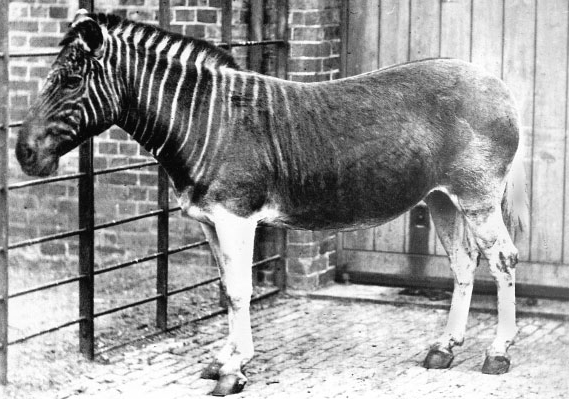
Interestingly, because the animal was so closely related to other subspecies of zebra, South African researchers have attempted a selective breeding program to create a new stock of the animals. The third and forth generation animals created through this project do look similar to the extinct creatures, but scientists debate whether or not looks are enough to declare these animals quaggas.
Source
Steller’s Sea Cow
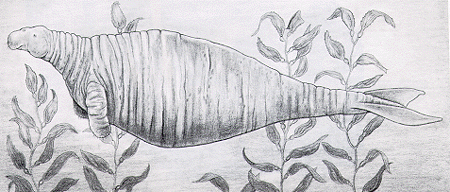
As a slow-swimming marine mammal that never completely submerged itself and was loaded with blubber, the Steller’s sea cow was doomed from the beginning. These massive herbivores were once abundant in the North Pacific, but aboriginal peoples hunted them until their population was limited to only the Commander Islands. Unfortunately for the sea cow, they were then discovered in 1751 by George Wilhelm Steller on an expedition led by Vitus Bering.
The Stellar sea cows were over 25 feet long. They were slow swimmers who couldn’t submerge themselves. There were only about 1,500 when Europeans first laid eyes on them and it wasn’t long before those remaining were hunted down for food, pelts and blubber, which could be used in oil lamps. Within 27 years of Steller’s discovery, the animals were extinct.
Source
Dodo
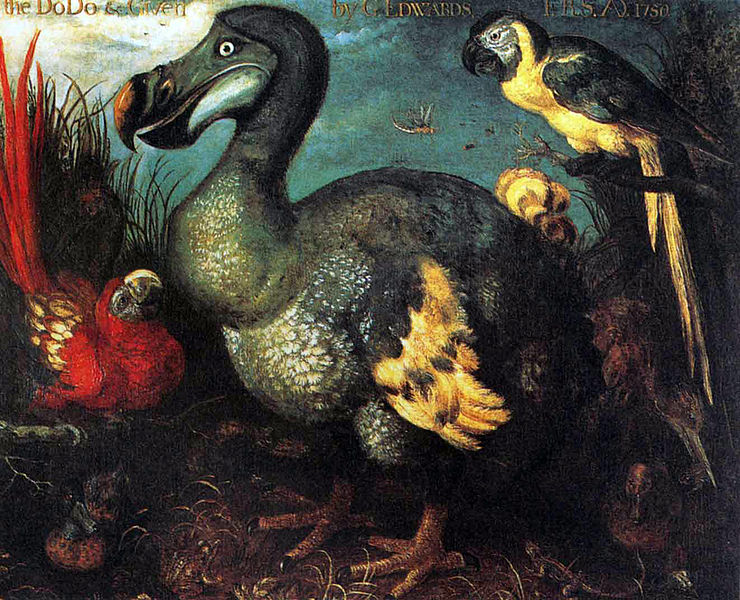
The dodo was related to pigeons and doves, but was flightless and much larger than either of these groups of birds. They weighed over forty pounds and stood more than three feet tall. They were native the island of Mauritius and first discovered by Dutch travelers in 1598. The birds weren’t afraid of people, which made them easy targets for hunters, but the importation of dogs, cats, pigs, rats and crab-eating macaques is what really killed the species. Some of the animals brought diseases to the birds, others ate them, but the worst were the macaques, which ate the eggs of the dodos. Within one hundred years of their discovery, the bird was wiped off the earth.
Interestingly, it wasn’t until the 19th century that the general populace actually took notice of the animal’s disappearance. Up until that time, many people believed that the animal was a myth, but then the first set of dodo bones were discovered in the Mauritian swamp. After the find, a schoolmaster named George Clarke wrote a report on the bird. The public soon gained interest and the bird quickly became a symbol for the human impact on animals.
Source
Great Auk
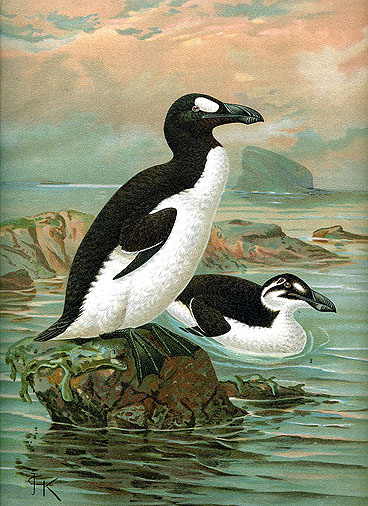
Like the dodo, the great auk was a large, flightless bird. In fact, they were close to the same height and weight, but the auk was a little smaller. While the auk might not have been too coordinated on land, it was an excellent swimmer and could even dive down to 3000 feet under the water, while holding its breath for up to fifteen minutes.
As a black and white sea bird that was an excellent swimmer, the great auk seems to be related to penguins, but the two are not genetically similar. Interestingly though, the auk was responsible for the naming of the penguins. The Spanish and Portuguese called the auks pingüinos and the Welsh called it pengwyn, meaning “little wing.” When European sailors discovered penguins, they thought they were related to auks and thus, gave them the same name.
While auks were relatively widespread throughout the North Atlantic, spreading all the way from New England to Iceland to Norway to Spain, they only had a handful of nesting spots due to their demanding breeding needs. Their breeding areas had to be rocky and isolated with easy access to the ocean and a large population of their favorite fish had to be close by. All of these needs ended up leaving them with no more than 20 breeding colonies, even when they had a massive population. To make matters worse, they only laid one egg per year, so when their numbers did start to dwindle, it took a long while for them to increase their population.
Despite these risks, the great auk was hunted by Native American cultures for over 100,000 years without any problems. The bird was more than just a food source, it was a status symbol. Archeologists even found one native buried with a cloak made from over 200 auk skins –he was certainly a revered member of the tribe while alive.
While many other species were wiped out shortly after being discovered by European explorers, the great auk was used as a source of down feathers in Europe since at least the 8th century. Early explorers also used them as an easy source of food and bait since they often ran low on provisions. Even so, the bird managed to survive off of the European coasts until the mid-16th century. When these populations were wiped out, scientists realized the great auk was in danger and the bird became one of the first animals to receive legal protection in an attempt to prevent its extinction.
Unfortunately, the fact that the bird was acknowledged to be rare garnered intense interest from museums and private collectors who wanted specimens for their collections. They offered high rewards to people who could bring them eggs or skins of the birds. Eggers would collect eggs from the nests, keeping those that were unfertilized and throwing away the rest.
The last colony of auks was located on the island of Eldey off of Iceland. As soon as it was discovered, museums started hiring people to collect the birds from the colony. The last pair was found incubating an egg on July 3, 1844. The parents were strangled by two of the collectors and just to ensure there would never be another great auk, a third man made sure to stomp on their egg.
Source
Passenger Pigeon
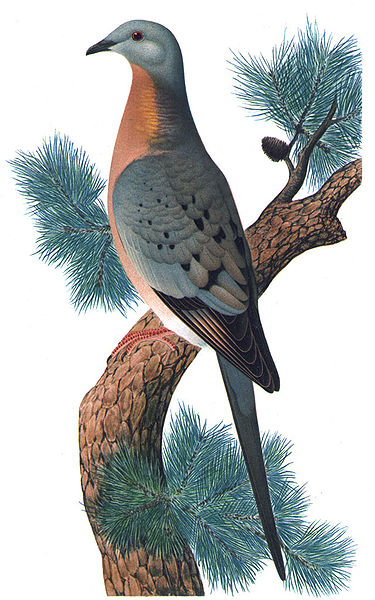
When Europeans first arrived in America, the passenger pigeons were present in such great numbers that it was said to take several hours for a flock to fly overhead. The flocks were often more than a mile wide and 300 miles long and made up of more than two billion birds. The birds went from being one of the most abundant animals on earth in the 19th century to being completely extinct by the 20th century.
The bird’s population started to decrease as Europeans started chopping down forests to make way for civilization, but even this didn’t thin their population too much. But by the 1800’s, people realized they could feed their slaves and servants passenger pigeon for practically nothing. Whole boxcars of pigeons were shipped to the cities, where a pair of pigeons would go for two cents.
If the passenger pigeons were like most other birds, they wouldn’t have been so easy to wipe out. Unfortunately, they were incredibly social and could not breed unless they were in a communal breeding area, which would stretch hundreds of miles –each tree could contain up to one hundred nests. Some nesting sites were estimated to hold more than 100 million individuals. This meant that hunters could go to the nesting sites and wipe out the birds at record numbers. At one of the last major nesting sites, there was a five-month long hunt that would generally result in the deaths of about 50,000 birds per day.
By the 1890s, it was obvious that the passenger pigeon was seriously endangered. The Michigan legislature enacted a law outlawing the killing of the birds within two miles of a nesting area, but authorities rarely enforced the rule. By this time, it was already too late anyway. The birds had to have massive nesting colonies in order to successfully breed and there were too few pigeons left. Some people even tried to help the population through captive breeding programs, but there were just too few birds to coax the animals into mating. The last passenger pigeon died in the Cincinnati Zoo in 1914.
Source
Tecopa Pupfish
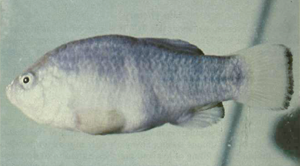
It might not be as exciting as a Tasmanian tiger, but the Tecopa Pupfish has an important role in the history of extinction, as it was the first animal to be officially declared extinct according to the Endangered Species Act of 1973. The Tecopa Pupfish was endemic only to the Tecoopa Hot Springs of the Mojave Desert. They were first discovered in 1942 and completely wiped out within a few decades after the hot springs were canalized into bath houses. It was officially delisted from the endangered species list in 1981.
Source
As an animal lover, this was a really hard article to write, but I do think it is important to learn from our history so we can help protect animals that are currently at risk. This is only a small sampling of the many animals that humans have brought to extinction, but with any luck, we can help stop that number from increasing in the future.
INCREDIBLE, WE ARE GORGEOUS MURDERERS.

